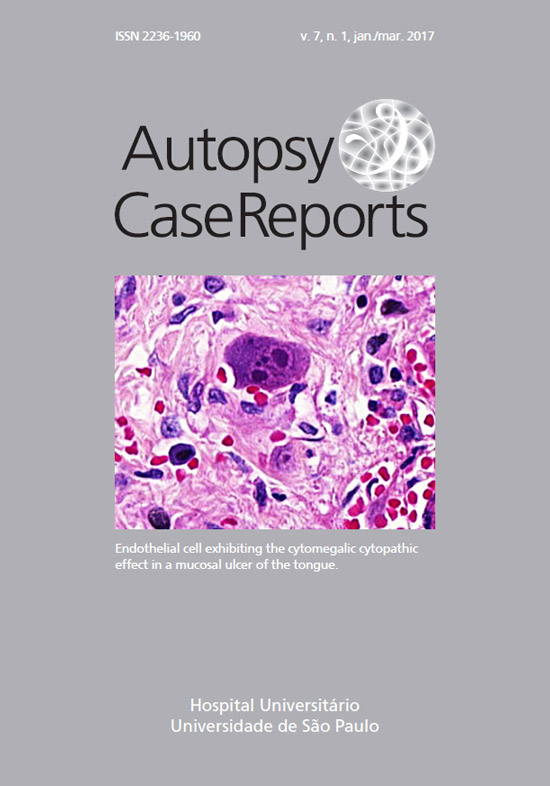Abdominal and pelvic actinomycosis due to longstanding intrauterine device: a slow and devastating infection
DOI:
https://doi.org/10.4322/acr.2017.001Keywords:
Actinomycosis, Salpingitis, Oophoritis, Abscess, Intestinal Perforation, FistulaAbstract
Actinomycosis is a chronic or subacute bacterial infection characterized by large abscess formation, caused mainly by the gram-positive non-acid-fast, anaerobic, or microaerophilic/capnophilic, obligate parasites bacteria from the Actinomyces genus. Although pelvic inflammatory disease is an entity associated with the longstanding use of intrauterine devices (IUDs), actinomycosis is not one of the most frequent infections associated with IUDs. We present the case of a 43-year-old female patient who was referred to the emergency facility because of a 20-day history of abdominal pain with signs of peritoneal irritation. Imaging exams revealed collections confined to the pelvis, plus the presence of an IUD and evidence of sepsis, which was consistent with diffuse peritonitis. An exploratory laparotomy was undertaken, and a ruptured left tubal abscess was found along with peritonitis, and a huge amount of purulent secretion in the pelvis and abdominal cavity. Extensive lavage of the cavities with saline, a left salpingo-oophorectomy, and drainage of the cavities were performed. The histopathological examination of the surgical specimen revealed an acute salpingitis with abscesses containing sulfur granules. Therefore, the diagnosis of abdominal and pelvic actinomycosis was made. The postoperative outcome was troublesome and complicated with a colocutaneous fistula, which drained through the surgical wound. A second surgical approach was needed, requiring another extensive lavage and drainage of the recto-uterine pouch, plus the performance of a colostomy. Broad-spectrum antibiotics added to ampicillin were the first antimicrobial regimen followed by 4 weeks of amoxicillin during the outpatient follow-up. The patient satisfactorily recovered and is already scheduled for the intestinal transit reconstitutionDownloads
Published
2017-03-29
Issue
Section
Article / Clinical Case Report
License
Copyright
Authors of articles published by Autopsy and Case Report retain the copyright of their work without restrictions, licensing it under the Creative Commons Attribution License - CC-BY, which allows articles to be re-used and re-distributed without restriction, as long as the original work is correctly cited.
How to Cite
Nakahira, E. S., Maximiano, L. F., Lima, F. R., & Ussami, E. Y. (2017). Abdominal and pelvic actinomycosis due to longstanding intrauterine device: a slow and devastating infection. Autopsy and Case Reports, 7(1), 43-47. https://doi.org/10.4322/acr.2017.001



